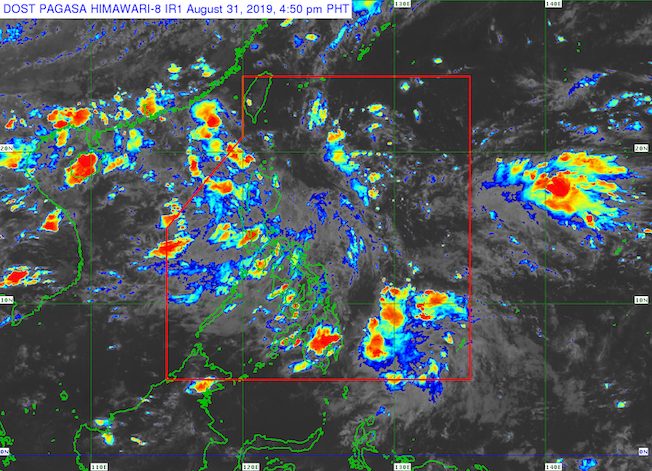SUMMARY
This is AI generated summarization, which may have errors. For context, always refer to the full article.

What’s the weather like in your area? Tweet us at @rapplerdotcom.
MANILA, Philippines – There are now two low pressure areas (LPAs) inside the Philippine Area of Responsibility (PAR) as of Saturday, August 31.
In a bulletin issued 4 pm on Saturday, the Philippine Atmospheric, Geophysical, and Astronomical Services Administration (PAGASA) said the first LPA is 115 kilometers north of Aparri, Cagayan.
This LPA, combined with the southwest monsoon or hanging habagat, is bringing scattered rainshowers and thunderstorms to Luzon.
It could also develop into a tropical depression within the next 36 hours, either on its way out of PAR or already outside PAR.
Meanwhile, the second LPA is 765 kilometers east southeast of Hinatuan, Surigao del Sur.
The trough or extension of this LPA is triggering scattered rainshowers and thunderstorms in the following areas:
- Visayas
- Northern Mindanao
- Caraga
- Davao Region
- Soccsksargen
The second LPA could also become a tropical depression within the next 48 hours.
The next two names for tropical cyclones are Kabayan and Liwayway. (READ: LIST: PAGASA’s names for tropical cyclones in 2019)
All areas affected by the two LPAs and the southwest monsoon should be on alert for possible flash floods and landslides, since the rain could be occasionally heavy. (READ: FAST FACTS: Tropical cyclones, rainfall advisories)
The rest of Mindanao, not affected by any weather system, will have generally fair weather, with only isolated rainshowers or localized thunderstorms.
The Philippines has had 10 tropical cyclones in 2019, with 3 of them in August.
The country gets an average of 20 tropical cyclones annually, but since 2019 is an El Niño year, only 14 to 18 tropical cyclones are expected.
Below is the estimated number of tropical cyclones from August to December:
- August – 2 to 4
- September – 2 to 4
- October – 2 or 3
- November – 1 or 2
- December – 0 or 1
PAGASA declared the start of the rainy season last June 14. – Rappler.com
Add a comment
How does this make you feel?
There are no comments yet. Add your comment to start the conversation.